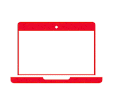Are medical stretchers becoming outdated in the age of telemedicine?
The surge in telemedicine is changing how healthcare is delivered. The rise in virtual consultations has disrupted a major aspect of this process, that is the evolving role of medical stretchers. This will definitely affect how patients are receiving care in remote areas.
The Growth of Telemedicine
Telemedicine has recently become very popular and will only continue to grow. According to a report issued by the American Hospital Association, telehealth visits were up 154% in 2020, when compared to the previous year. These numbers represent a huge shift in how patients access medical care.
In remote places, it is doing a great job of re-connecting patients with health providers. It essentially allows doctors to diagnose and treat patients without any on-site visits. This is where medical stretchers fit in but in a different role for the most part.
New opportunities, new demands
In a conventional hospital, stretchers may have a single use. They may be used to get a patient from one part of the facility to another. Now, in a world propelled by telemedicine, stretchers serve diverse uses.
By way of example:
- A mobile health unit in a rural area, convenient stretchers to get a patient from their house to a mobile health clinic.
- First responders in disaster situations employ stretchers to assist with rapid patient movement and triage (think internet based care)—so hands-on treatment via remote telemedicine can be quickly initiated.
- Nursing homes with teleconsults (remote evaluation) do a good job of moving patients to a location with a digital device and a safe transport device.
In these examples, the demands for stretchers are lightweight, collapsible, and very mobile. Not just for expedient use but to assist in a timely intervention (followed by care) from a provider working remotely.
Intelligent Stretchers for Intelligent Care
The future of medical stretchers is clearly technology-ready designs. The latest stretchers, for example, include:
- Built-in digital support mounts (for tablets, monitors)
- Battery operated adjustable frames
- GPS tracking for field use
- Quick-loading systems for ambulances used in telehealth-based transports
These elements both enhance speed and safety, while ensuring that stretchers become lodging for telemedical tools in real time.
Mobi Medical Supply: Bridging the Gap
With quality, mobility, and technology integration, Mobi Medical Supply is breaking the mold.
Their ambulance stretcher line, featuring the MOBI 3B Automatic Loading Aluminum Stretcher, fits seamlessly in remote, and mobile care contexts. It has a weight capacity of 350 pounds, one-person operations, FDA, CE, and ISO 9001 certifications,
For rugged environments or temporary field clinics, Mobi Medical offers a portable and foldable solution. These stretchers are light to carry, simple to sanitize, and easy to pack. They are designed for paramedics or disaster response teams that are integrated telehealth support systems.
Real-World Impact
Let's take a look at how this plays out in the field.
- In Alaska, where many communities lack healthcare infrastructure, telemedicine vans designed with stretchers and adapting digital systems connect doctors to patients via video calls.
- Other equivalent contexts in remote areas in India and Africa have similar telehealth systems that use stretchers to transport patients to mobile care points and doctors can assess the patient's situation through video communications in real-time.
In these circumstances, the stretcher is part of a digital care chain and not merely a tool for transporting patients, but a stable platform for diagnostics and treatment.
Relevant Numbers
McKinsey estimates that telehealth utilization in 2021 remained at 38 times the pre-COVID baseline. While the patient handling equipment market, including stretchers, is projected to grow globally to $23 billion by 2030, with a projected CAGR greater than 6.5%.
This goes to show that even in this digital-first healthcare landscape, physical tools such as stretchers still heavily matter—albeit smarter and more adaptable than ever before.
Looking Forward
Telemedicine is enhancing traditional care, not replacing it. Further, as remote care expands, the demand for stretchers that are versatile, reliable, and compliant with technology will only increase.
From disaster relief to rural outreach and home-based care delivery, stretchers are more important than ever before. Companies like Mobi Medical Supply are ensuring this critical need is met—with innovative, reliable, and cost-effective solutions.
In a world of virtual care, Mobi stretchers keep real care moving.
Check out the stretchers available with us..
-
MOBI Pro X-Frame EMS Stretcher - Versatile, adjustable EMS cot with contoured mattress, straps, 500 lb capacity, and 2-person operation.
-
First Call Removal Folding Stretcher (Model: MOBI-FRS350)- Durable aluminum alloy foldable cot with drop-down legs, compact storage, and 350 lb capacity.
-
Scoop Stretcher Pro - Lightweight, X-ray translucent stretcher with safety locks, adjustable head section, and four length options.
-
MOBI EZ Battery Powered Stair Chair - Strong 500 lb capacity stretcher for home or medical use, with warranty.

















 How Telemedicine is Changing the Role of Medical Stretchers in Remote Care
How Telemedicine is Changing the Role of Medical Stretchers in Remote Care
 Why Cot Design Matters in Body Transport
Why Cot Design Matters in Body Transport
 Ambulance Stretchers 101: A Buyer's Checklist for Quality and Compliance
Ambulance Stretchers 101: A Buyer's Checklist for Quality and Compliance
 Mobimedical’s Custom Solutions for Laboratory and Pathology Room Challenges
Mobimedical’s Custom Solutions for Laboratory and Pathology Room Challenges
 Where to Buy Stair Stretchers with Fast Shipping Across the Country
Where to Buy Stair Stretchers with Fast Shipping Across the Country